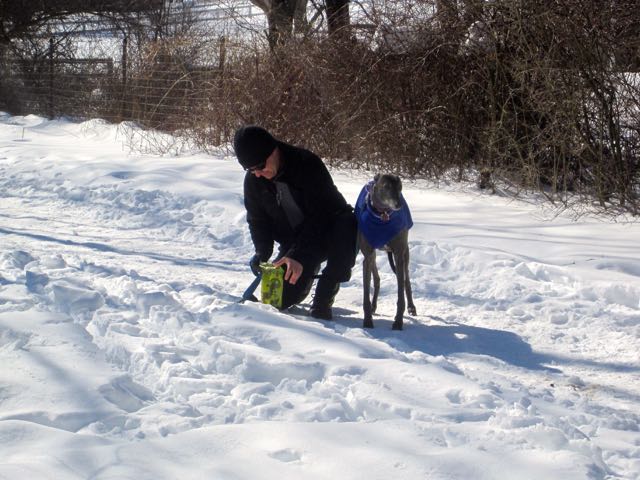
Why does it appear that dog walkers are more lax about picking up dog poop in winter? And why should they not be?
Last Friday, I was x-country skiing in Huntington Park – beginning at the Old Dodgingtown Road trailhead. Both on and off the trails were mounds of dog poop. Some turds frozen hard, others left that day and partially submerged in the softened snow. There was yellow snow everywhere.
Not having a dog to walk, I had some questions: Do dog walkers who usually pick up the poop neglect this courtesy in winter because they think it will melt along with the snow? Do they think they might pick up some snow in the plastic bag along with the poop, making it heavier to carry? Do they want to keep themselves and their dogs moving to avoid frostbite?
My friend who takes her dog on walks in the local parks explained it to me: In the warmer months, many dogs traipse into the woods off trail to perform their duty and most walkers don’t follow along to pick up the poop: out of sight, out of mind. But in winter, when the snow is deep, dogs perform close to the trails. And that is why there appears to be more poop in winter, this winter especially.
But, to many others and me, the seasonal difference doesn’t justify the negligence of dog walkers who leave poop anywhere — on or off the trail. The Connecticut Department of Energy and Environmental Protection (DEEP) has certain guidelines for pets in State Parks any time of year: “Pets on a leash are permitted in most state parks and forests. Owners must remove and properly dispose of pet waste left by the pet or riding animal under their control.” Beyond the obvious safety issues, a leashed dog stays within sight so the walker can pick up the poop when and where it happens.
Surface run-off to waterways contains many pollutants but it may be surprising that dog waste has been identified as a primary bacterial pollutant. Using genetic tracking, researchers determined that almost 20% of the bacteria in a Seattle area watershed could be matched with dogs. Other studies conducted throughout the country indicate that non-human waste represents a significant source of bacterial contamination in urbanized watersheds.”
Most of Redding is a watershed and Reddingites rely on wells as a source for water. We are a healthy community and our Parks and open lands and their water bodies deserve our consideration. This consciousness can begin with the responsible use of Redding’s vast and wonderful trail system and the adjacent woods and fields by everyone who uses them.
If you see a dog walker who hasn’t picked up their dog’s poop, please say something.
Hugh

